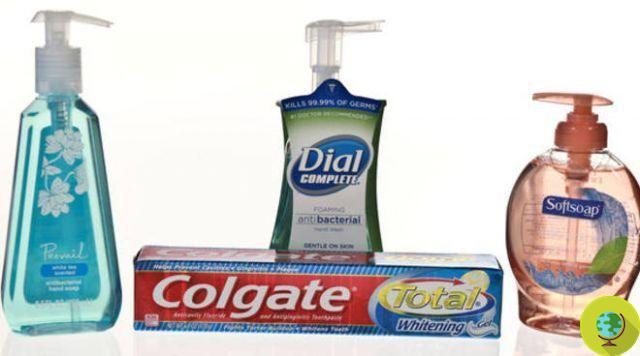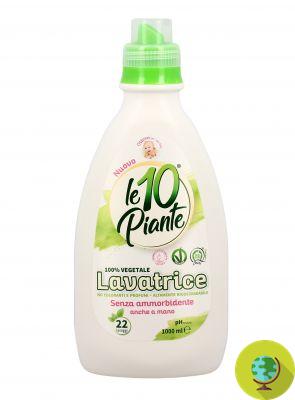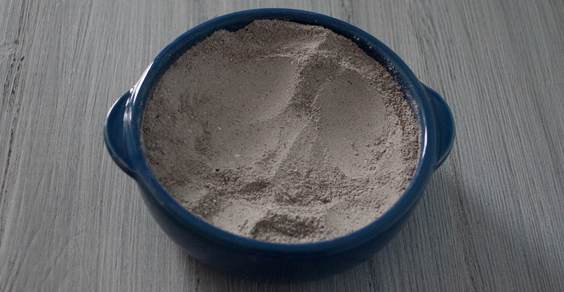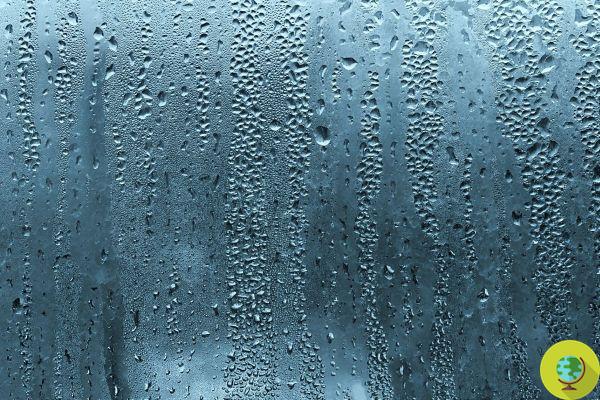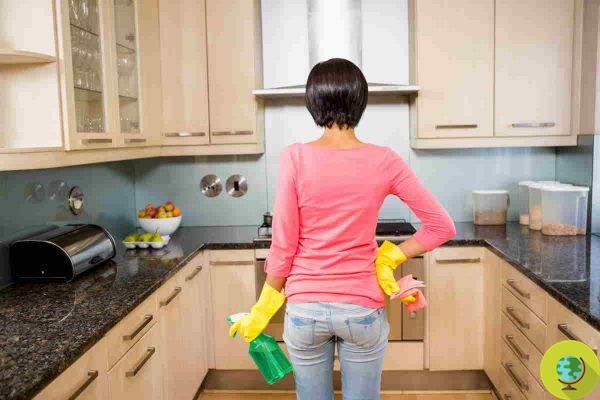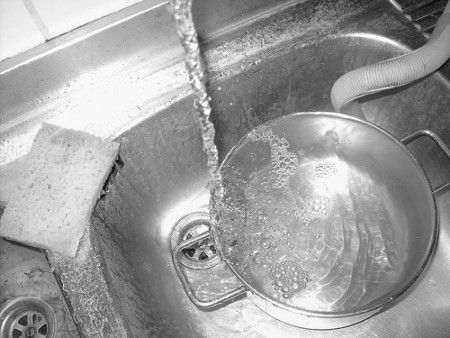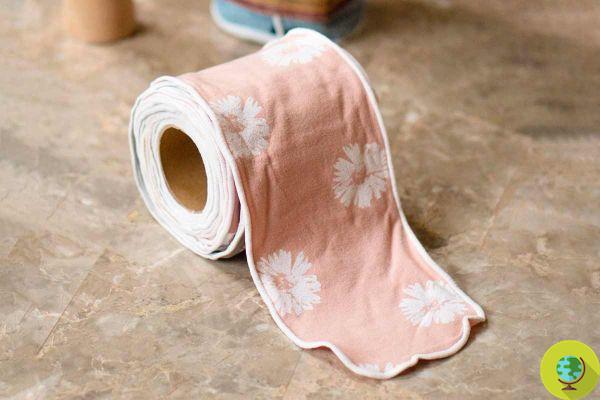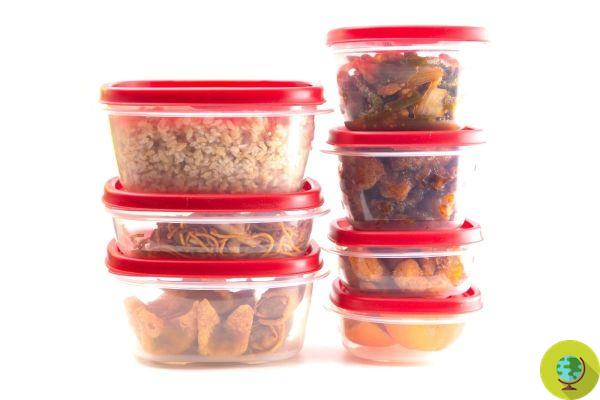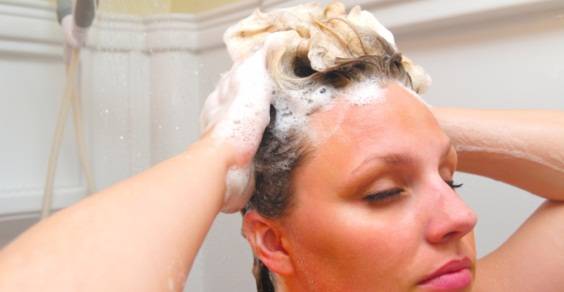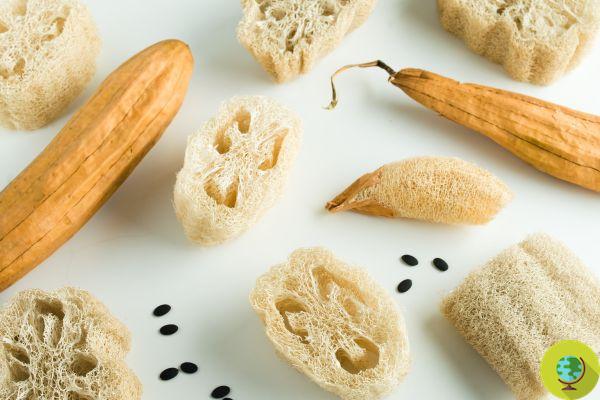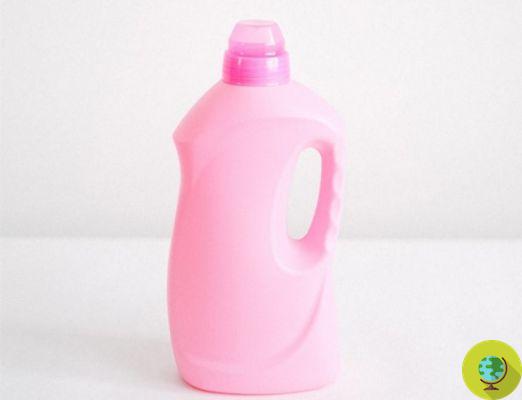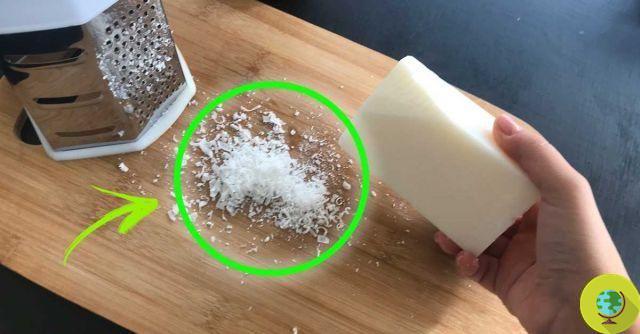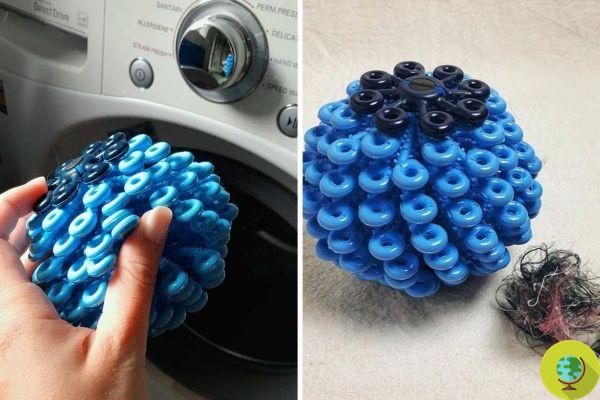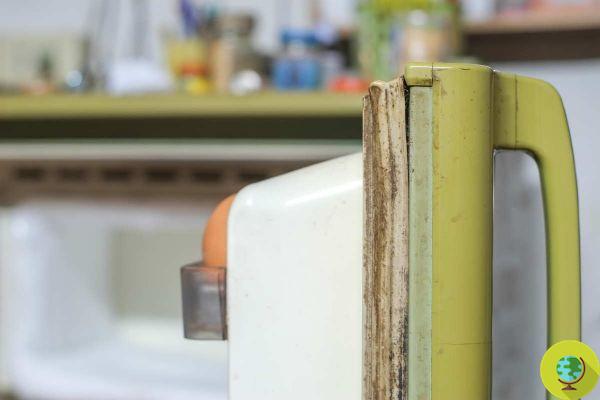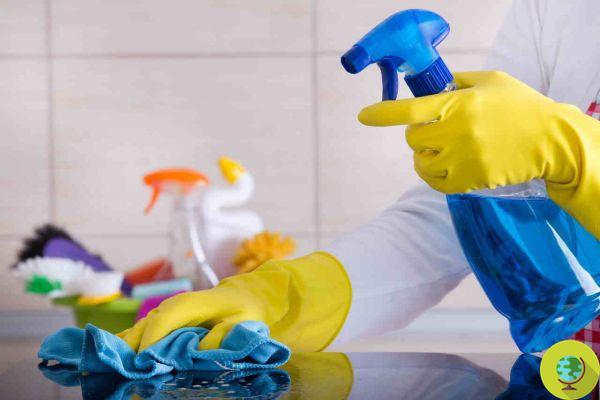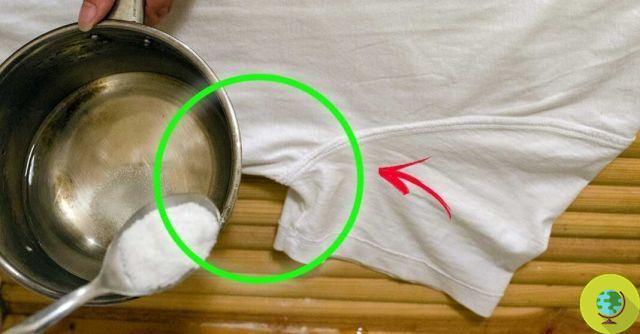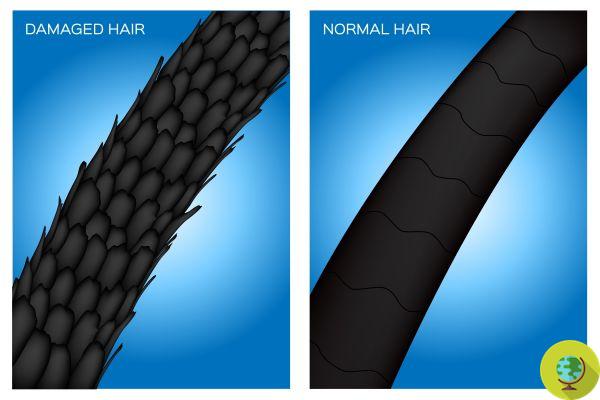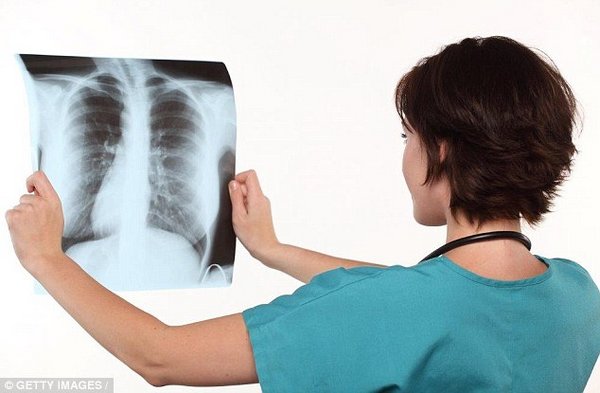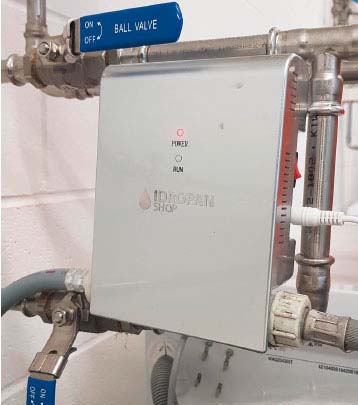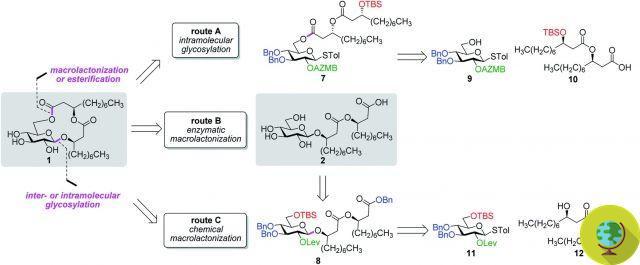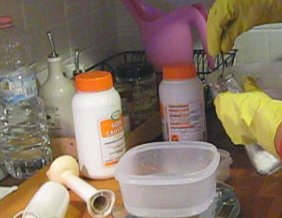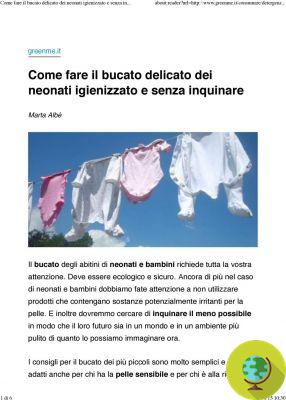
The laundry of baby and children's dresses requires your full attention. It must be ecological and safe. Even more so in the case of babies and children we must be careful not to use products that contain potentially irritating substances for the skin. And also we should try to pollute as little as possible so that their future is in a cleaner world and environment than we can imagine now.
He is about to end up run over, his mother saves him
Il laundry of the dresses of babies and children it requires your full attention. It must be ecological and safe. Even more so in the case of babies and children we must be careful not to use products that contain potentially irritating substances for the skin. And also we should try to pollute as little as possible so that their future is in a cleaner world and environment than we can imagine now.
The tips for the laundry of the little ones are very simple and are also suitable for those with the sensitive skin and for those looking for green solutions to wash your own clothes, but also pillowcases and sheets. Here are some tips that all parents should take into account for green baby laundry.
Index
Wash new clothes
Wash i new clothes before they are worn it's very important because we don't know how these garments were treated during production, shipping and the time they spent in warehouses and stores. Since children's skin is very sensitive and tends to absorb everything that touches it, it is best to wash new clothes before wearing them for the first time. Thus we will be able to eliminate any unwanted substances from their surface.
Marseille soap for laundry and to pre-treat stains
For your hand laundry and to pre-treat stains when it comes to the little dresses of the little ones (but not only), you prefer real Marseille soap. Seek ecological Marseille soap in specialized shops or make natural soap at home with just three ingredients.
Real Marseille soap is the simplest and most effective natural remedy we can have available for pre-treat stains and to quickly hand wash some small useful items that cannot wait for the actual laundry in the washing machine. Among other things, you can prepare fragrance-free soap at home, in order to reduce any risk of allergy.
To leave dry in the sun dresses, sheets and other items, especially if they are white, helps to make any streaks disappear, as our grandmothers teach. Better to pre-treat stains immediately when they are still fresh: to facilitate laundry, intervene as soon as possible if you can.
Read also: How to make homemade soap with just three ingredients
Sodium percarbonate as an ecological stain remover and sanitizer
Il sodium percarbonate it is useful as ecological sanitizer for laundry in place of the common products for sale, for revive whites and how stain remover in powder to act against dirt stains even before the actual washing. Sodium Percarbonate is an eco-friendly all-around product in children's laundry. In fact, it will replace all the common bleaching and disinfectant products most used.
Add one or two tablespoons of sodium percarbonate when soaking clothes, washing by hand or in the washing machine to remove stains and sanitize. You can also pre-treat both fresh and dry stains: moisten them and then sprinkle them with percarbonate. Let it act as long as possible before the actual washing.
Read also: Sodium percarbonate: properties, uses and where to find the ecological whitener
Ecological detergents for children's laundry
Choose as much as possible ecological laundry detergents both by hand and in the washing machine of dresses, bibs and all the accessories of your children. If the little ones have skin that is sensitive to common detergents, try using fragrance-free laundry products. In fact it is quite common that the synthetic fragrances common detergents can cause allergies.
Do not overdo the amount of detergent to pour into the washing machine drum so that rinsing is easier. Otherwise, to prevent any residues of detergent or fabric softener may come into contact with children's skin, you should do an extra rinse. Always rinse well even when you happen to wash some small items by hand.
Read also: 10 truly ecological detergents and 5 products that are not actually green
Ammorbid
Regarding thesoftener, ask yourself first if you really need it for the laundry of the little ones. If so, you can replace the products commonly on sale with an ecological alternative that does not contain fragrances and filming substances that can cause allergies.
It is simply thecitric acid, an eco-friendly multipurpose ingredient that works great as a fabric softener and leaves no bad odors on the laundry or residues that can cause irritation on the delicate skin of babies and children. Some have replaced conventional fabric softener with vinegar, but it's good to know that citric acid is a much greener alternative. THU all the info on the use of citric acid as a softener.
Read also: Citric acid: how to use it and why prefer it to vinegar in cleaning
Washable nappies
Be very careful in the washing of the washable nappies so that they can last a long time and maintain their degree of absorbency. The advice is to follow the washing instructions carefully dedicated to washable nappies which are indicated by the manufacturing companies based on the material with which the diapers are made. In some cases the Marseille soap could "wax" the diapers and reduce their degree of absorbency. If you still need to pre-treat with soap, brush and rinse well so that no residue remains. Or use a delicate ecological detergent for hand washing when it comes to pretreating and for the washing machine in the case of actual washing.
We suggest that you wash your machine washable nappies and pretreat them simply by rinsing them with cold water. Me too'classic softener usually comes recommended to avoid waterproofing, even partially, the absorbent fabrics of washable nappies. Instead the sodium percarbonate as an ecological sanitizer.
You can do laundry in the washing machine at 40 ° C for washable nappies. In any case, choose the most suitable washing temperature based on the specific instructions for the material of the washable nappies you have chosen.
Also read: 10 excuses not to use washable nappies
Read also:
Do-it-yourself detergents: how to self-produce laundry detergent (liquid and powder)
Citric acid: how to use it and why to prefer it to vinegar in cleaning




